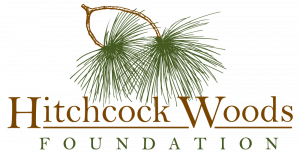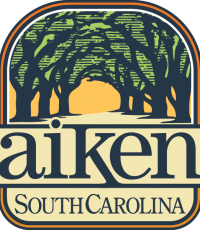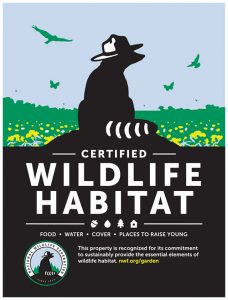Woods Stewardship
Management Plan
Download a PDF copy of the management plan
Prescribed Burning
Prescribed burning, also referred to as controlled burning, is the careful application of fire to forests by trained fire managers for several different management objectives. Prescribed burning is conducted to promote the health of the fire-dependant longleaf pine ecosystem.
Prescribed burns are conducted for three main reasons. The first reason is hazard reduction, to reduce the accumulation of forest fuels. This helps to prevent or reduce the risk of damaging or even catastrophic wildfires.
The second reason is hardwood control. Hardwoods are “top-killed” with prescribed burns, which means they can (and will) grow back the following spring. The reduction of hardwoods creates an open landscape that promotes less competition for the longleaf pines so they may naturally regenerate and thrive. Another benefit of reduced hardwood competition is that it allows native ground cover species such as grasses, legumes, and forbs to flourish.
Third, prescribed burns are conducted for the enhancement of wildlife habitat. A fire maintained ecosystem promotes better foraging opportunities for wildlife, as well as better bedding and nesting habitat. Before European settlement of the southeast (and their fire suppression practices), fires naturally caused by lightning would burn millions of acres of southern forests at a time. Fire is a naturally occurring process in forests; thus, prescribed burns are simply mimicking nature. Native Americans living in the longleaf pine forests purposely burned areas for centuries to create habitat for important plants and animals they needed for survival.
The prescribed burning program of the Hitchcock Woods Foundation has been in place for over 25 years. Typically, the upland stands are burned on a two to five year cycle, depending on the management objectives. In a given year, roughly 200 to 500 acres are burned across the Hitchcock Woods, depending on how conducive the weather is for burning and smoke dispersal.
For more information:
www.goodfires.org
www.visitmyforest.org
http://www.clemson.edu/cafls/departments/forestry/pfc/index.html
Trail Maintenance
The Foundation uses several practices for maintaining the trail system in the Hitchcock Woods. One practice is creating and maintaining “water-bars,” or diversion ditches, to redirect rainwater as it flows down trails and slopes across the Woods. If left to flow straight downhill, the runoff would erode the sandy soils and create treacherous ditches on the slopes. Another maintenance practice is grading the trails by using a box-blade behind a tractor to smooth out erosion contours after heavy rains. A patching method to help protect tree roots is to put mulch on the roots as a natural covering.
A sensitive measure taken when creating fire breaks, or control lines for prescribed burning, is using a landscape rake behind a tractor when clearing the trails of leaves and pine straw. (Other implements would be more prone to disturb the soil.) In the last few years, backpack blowers have been used for clearing extremely sensitive and narrow trails in order protect the plant life and preserve the soil.
For vegetation management, trimming of branches is conducted to keep trails open and passable. Bush-hogging keeps trails and the wide drag lines open. If left alone, scrub oaks would encroach into the trials and overtake them. Former timbering “loading decks,” which now serve as open fields, are mowed or bush-hogged on a schedule that enhances the function of these areas.
Exotic Invasive Control
One topographical aspect of the Hitchcock Woods is that seven watersheds flow into the Woods, bringing in stormwater runoff from upland neighborhoods. This runoff also brings along various seeds and other materials that spread throughout the Woods.
Ornamental plant species that look great in a residential yard and are routinely groomed on a regular basis often are non-native. Several examples of these species include Chinese Wisteria, Japanese Climbing Fern, Chinese Privet, Elaeagnus (thorny olive), Chinese Parasol Tree, Chinese Tallow Tree (popcorn tree), Nandina, Kudzu and many others. These foreign species unfortunately can thrive well in our area and will overtake native trees and other native plants. The Foundation makes an effort to keep these species at bay, or eliminate them altogether.
There is a “behind the scenes” effort to target problem areas of the Woods where these species are getting out of control. Several methods of control include “hack and squirt,” in which stems are chipped and an herbicide is carefully applied to the cambium layer of bark. Another method is a backpack foliar spraying application in areas where an exotic invasive is growing across the surface of the ground, choking out native plants. Thirdly, a cut stump application is another method where the stem of an unwanted plant is cut and an herbicide is applied to the fresh cut. It will eventually soak in and kill that particular stem so it will not re-sprout.
Herbicides are carefully chosen based on the targeted species and are applied by certified pesticide applicators in a responsible manner. As long as the seeds of non-native tree and other plants wash into the Woods, invasive species will always be a management issue for this and other forests.
For more information:
http://www.invasive.org/
Timber Management
Forest Thinning Benefits & FAQ’s
In-house Tree Thinning
The Foundation often must deal with isolated tree felling issues. Lightning during thunderstorms is a culprit of tree mortality everywhere. Sometimes trees survive these strikes, but it is rare. If and when a tree is struck, and if it is a pine tree, the stressed tree can be infested by several different species of pine bark beetles. The infestation can cause the insects to spread to neighboring trees, worsening the problem.
There are silvicultural practices for dealing with these issues. Once a tree dies, either by lightning, beetle infestation, or naturally through senescence, and if the tree is near a trail and could fall on the trail, the tree is removed for safety reasons. However, if the tree is off the trail and is not in jeopardy of falling on a trail, it typically is left as wildlife refuge or habitat.
For more information:
http://www.bugwood.org/
Commercial Thinning Operations
For many decades, the Foundation has been conducting thinning operations of timber in the forest. Years ago, the timber thinning operations were conducted to generate some income for the Foundation’s management of the Woods, as well as to promote a healthy forest.
In recent years, thinning operations have been driven and conducted more for the ecological health of the forest rather than for the income. In 1998, the Foundation hired a team of ecologists to develop a management plan for the restoration of the longleaf pine ecosystem. This management plan outlines the “basal area,” or the density of trees in a stand, for each of the 47 management compartments of the Woods. This plan makes recommendations for thinning opportunities.
By thinning the forest, openings that are created in the tree canopy allow light to reach the ground. This promotes native plant species to flourish. A thinner forest also reduces competition among the trees for sunlight, water, and other nutrients. The Foundation usually conducts larger thinning operations on a two to three year rotation, depending on the management schedule.





